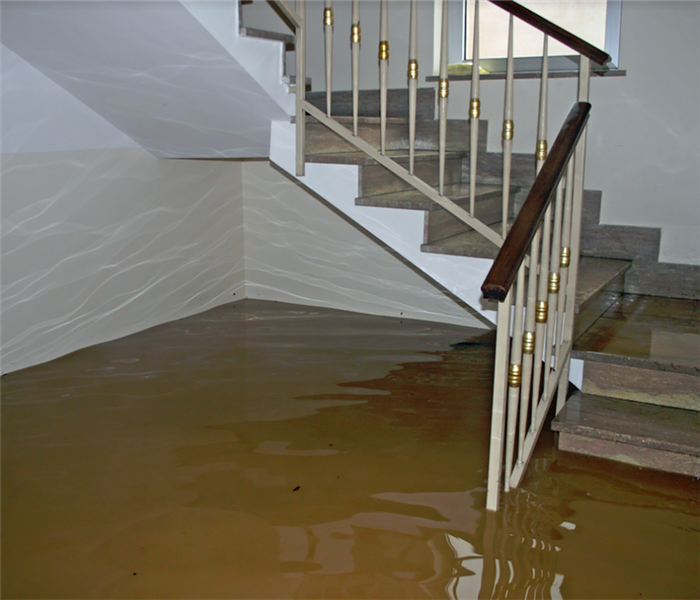Why is it Essential that Flood Damage Teams in Jamesport Understand Building and Material Science?
10/31/2020 (Permalink)
 If your historic home suffers from flood damage, time is of the essence. Contact Team SERVPRO for effective water removal services.
If your historic home suffers from flood damage, time is of the essence. Contact Team SERVPRO for effective water removal services.
Jamesport Residents Need Flood Damage Control that suits Their Homes
Jamesport is a small, quaint hamlet with a variety of exciting and historic homes. Residents love how much character the area has, and of course, they want to preserve the character of their homes in the event of a disaster.
Flood damage in Jamesport can cause many problems:
- Soaked carpets and drapes
- Warped wooden floors or furniture
- Structural damage to insulation, drywall, or door and window frames
- Unsanitary conditions if the floodwater is contaminated
Floods also increase the risk of mold growth in your home by providing the moisture that spores need to propagate. If you do not get help quickly, you could be left with irreparable items and an unpleasant damp smell.
Thankfully, SERVPRO of The North Fork is available 24 hours. We're Faster to Any Size Disaster – you can expect a visit within four hours of contacting us.
What is building and material science?
In the restoration industry, building and material science refers to understanding different building types and building materials, and how to dry them.
A thorough understanding of different construction materials is the foundation of flood damage restoration in Jamesport. That is why SERVPRO trains all of its staff to the Institute of Inspection, Cleaning and Restoration Certification (IICRC) standards. IICRC training means our technicians understand how to work with different materials and create a drying plan that is unique to each dwelling.
Why is building and material science important in flood remediation?
Knowledge of building and material science helps our technicians to:
- Carry out accurate moisture inspection
- Correctly identify the materials present in your home
- Correctly identify the assembly of each component
- Draw up a detailed drying plan
Knowing about building and material science makes it easier to anticipate challenges and take steps to mitigate them before they become an issue. It also allows us to calculate how to dry your home and which equipment is best to use. This is especially important in an area like the North Fork, where there are so many historic and unique houses.
What is a building envelope and why does it matter?
The building envelope means everything that separates the inside of your home from the outside. It includes exterior walls, the roof, ceilings, finished floors, windows and doors, and the foundation. Homes are not completely airtight. The IICRC ranks houses according to how well the building envelopes prevents external conditions from influencing inside conditions:
- A tight envelope means we can control drying conditions without significant effects from outside
- A moderate envelope means that the outside conditions will moderately impact drying conditions
- A loose envelope means that the conditions outside will significantly impact the conditions inside
To determine where your home falls on this scale, we will consider its age, its construction, the condition of windows and doors, whether there is any damage to the roof, and other details.
Understanding the building envelope makes it easier for us to determine the correct placement of air movers, fans, and dehumidifiers while we dry your home.
What are mechanical systems and why do they matter?
Mechanical systems sound fancy, but it just refers to plumbing, air, and heating. Examples of mechanical systems include plumbing, the HVAC, exhaust vents, electrical points, and fireplaces. Awareness of these systems is critical when drying after flood damage because they can affect a room's air pressure and temperature.
For example, if flood water damages your bathroom, and SERVPRO wants to set up a drying system, we must be aware of the bathroom vents and fan. Vents and fans can allow air to escape, creating a negative air situation. Air will rush in to replace the air that went out. If the incoming air is colder or damper than the escaping air, that can affect our drying system, and we must adjust accordingly.
Why must SERVPRO technicians understand the movement of air, heat, and water?
The design of your home can impact the way air, heat, and water move through it. For example, as well as known air entry and escape points, like doors, there may be cracks in masonry. We know that hot air always moves towards cold air, which means hot air will flow towards the outside in the winter. Air and temperature can also be affected if you turn on your HVAC or bathroom exhaust fan while we are working.
Water can move as liquid along surfaces, as vapor, or by materials wicking moisture from the air. Our technicians can trace the movement using moisture meters and probes, and we can measure humidity during drying.
A thorough understanding of building and material science means SERVPRO can remedy water damage more quickly and efficiently, so you can get on with your life.
For help with water damage, call SERVPRO of The North Fork at (631) 591-3771.

 24/7 Emergency Service
24/7 Emergency Service